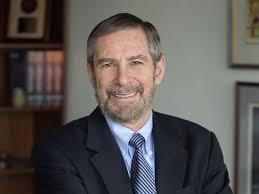
Douglas R. Lowy, M.D., acting director of the National Cancer Institute (NCI).
Providing insights into the Cancer Moonshot and other initiatives to accelerate cancer research and make more therapies available to patients, Douglas R. Lowy, M.D., acting director of the National Cancer Institute (NCI), led a plenary session at the 58th Annual Meeting of the American Association of Physicists in Medicine (AAPM).
Medical physicists play a vital role in the diagnosis and treatment of cancer, through the development of novel imaging techniques, advancement of innovative therapy approaches, and ensuring the clinical use of imaging and radiation therapy are safe and effective. The NCI currently is funding several research initiatives on imaging and radiation therapy to better understand how to use immunotherapies in combination with targeted therapies and treatments such as chemotherapy and radiation.
“As medical physicists, we look forward to exploring ways in which our unique skills in the safe and accurate use of technology and radiation can advance the goals of the Cancer Moonshot,” said Bruce H. Curran, M.Eng., M.S., president of AAPM and associate professor of radiation oncology at VCU Health Systems, Richmond, Va. “We play a vital role as professionals involved not only in helping to treat cancer patients, but improving diagnosis and monitoring the response of cancer therapies during treatment.”
A longtime researcher, Lowy is one of the most highly cited authors in microbiology, and a member of the National Academy of Sciences and the Institute of Medicine. He received the 2007 Federal Employee of the Year Award from the Partnership for Public Service, the 2007 Dorothy P. Landon-American Association for Cancer Research Prize for Translational Cancer Research, the Sabin Gold Medal in 2011 and the National Medal of Technology and Innovation from President Obama in 2014, among others.
Lowy’s research focuses on papillomaviruses and the regulation of normal and neoplastic growth. In the 1980s he identified the oncogenes encoded by papillomaviruses and recently worked on papillomavirus vaccines and its life cycle.
For more information: www.aapm.org/meetings/2016AM


 December 11, 2025
December 11, 2025 









